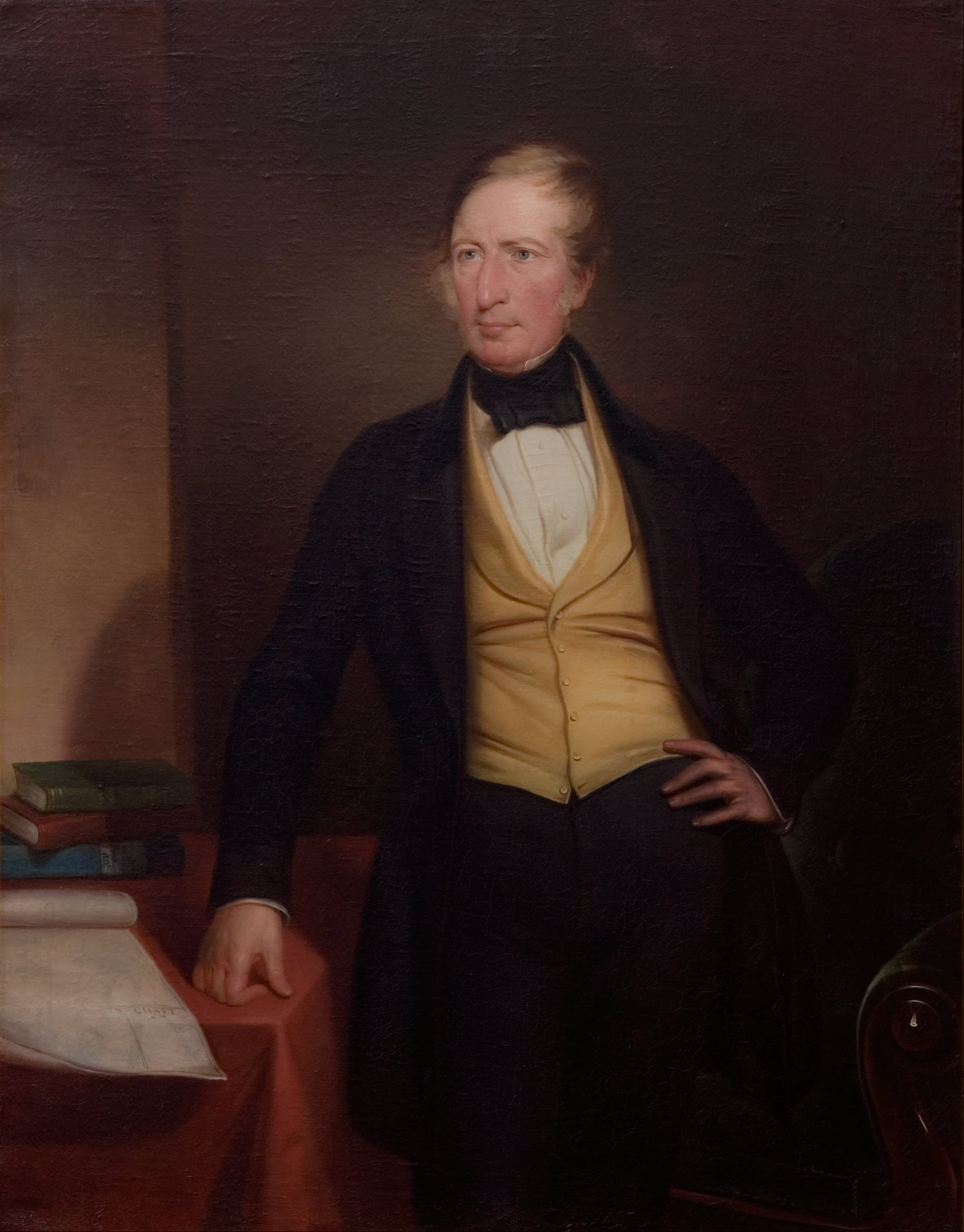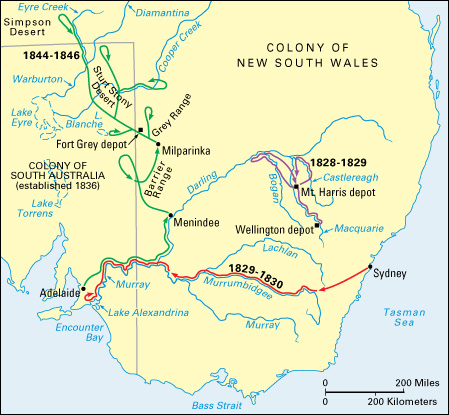Sturt, Charles (1795-1869), was a British soldier who made several explorations of Australia. His discovery of the Darling River and his charting of the Murray River were notable achievements that encouraged the spread of settlement to the outback.
Early life.
Charles Napier Sturt was born in Chunar-Ghur (also called Chunar) in northern India on April 28, 1795. His father was a judge who worked for the East India Company, an English trading firm. Sturt was educated at Harrow School in England. In 1813, he joined the British army. He fought against the French in the Peninsular War (1808-1814), a campaign of the Napoleonic Wars. He then fought against the Americans during the War of 1812. He was promoted to captain in 1825. A few years later, Sturt and his regiment were sent to what was then the colony of New South Wales to guard convicts. They arrived in the settlement of Sydney on May 23, 1827. 

Sturt developed an interest in exploring Australia, much of which was uncharted at the time. He made his first journey to the continent’s interior in 1828 and 1829. Sturt chose the Australian-born explorer Hamilton Hume as his assistant. Hume and another explorer, William Hovell, had already discovered an overland route from Sydney to Port Phillip on the southern coast of what is now the state of Victoria. In November 1828, Sturt and Hume gathered a small party and set out to trace the Macquarie River. Illness and water shortages continually delayed the expedition, but on Feb. 2, 1829, they came upon what Sturt called “a noble river.” Sturt named this river the Darling, after the colonial governor Sir Ralph Darling. When Sturt and his men returned to Sydney, they brought much valuable information about the colony’s northern river system.
Sturt’s second expedition
left Sydney in November 1829 to explore the Lachlan-Murrumbidgee river system. Sturt split the expedition upon reaching the Murrumbidgee, leaving several men to establish a base camp. Sturt and seven other men journeyed from this point. On Jan. 14, 1830, their boat entered “a broad and noble river.” Sturt named this waterway the Murray, after a British statesman of the time.
The party continued downstream and reached a large lake. The combined waters of the two rivers flowed through the lake and emptied into the ocean. Sturt named the lake Alexandrina, after the British Princess Alexandrina Victoria, who later became Queen Victoria. The expedition began the return journey on February 12 and reached Sydney on May 25.
The hardships of exploration affected Sturt’s health, and he suffered temporary blindness during a voyage home to England. Sturt’s two-volume account of his voyages, Two Expeditions into the Interior of Southern Australia, was published in 1833 and 1834. He married Charlotte Greene in England on Sept. 20, 1834. Sturt remained interested in Australia, and returned to Sydney with his wife in 1835.
Sturt’s third journey
began in August 1844. The 16-man party, which included explorer John McDouall Stuart, traveled from the city of Adelaide to the present-day town of Menindee, on the Darling River. The group spent several months exploring the Barrier Ranges near the site of Broken Hill in western New South Wales before moving north. In January 1845, the group stopped near what is today the settlement of Milparinka in far northwestern New South Wales. Heat and drought forced Sturt’s party to remain there until July, when heavy rains allowed them to continue.
Sturt continued trying to penetrate the barren interior of the continent. He pressed on as far as a desert, now named the Simpson Desert, before turning back. Then, disheartened and sick with scurvy—a disease caused by a lack of vitamin C—Sturt retreated southward. In January 1846, the party returned to Adelaide.
Later life.
Sturt returned to England, where he was honored by the Royal Geographical Society. In 1849, his Narrative of an Expedition into Central Australia was published. That year, he traveled to South Australia, where he was appointed colonial secretary. In 1851, he retired on a pension and returned to England in 1853. He died in Cheltenham, Gloucestershire, on June 16, 1869.
